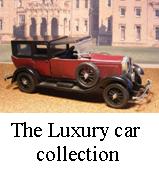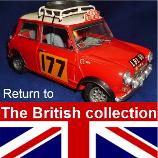
1929 Rolls-Royce 40/50hp “Phantom” tourer.
Rolls-Royce cars have always been the embodiment of quality. Nothing less than 100% perfection in every single part of their cars is acceptable; from the founding of the company to the present day. The cars of royalty, the ultimate status symbol, nothing has more prestige than owning a Rolls-Royce.
However, innovation and development are continuously evolving and even Henry Royce accepted this fact. Furthermore, in business, the customers whims and beliefs are just as important as any specification sheet might be. So, when Bentley cars started winning at Brooklands in 1921, and then at le Mans in 1924 too, it was clear Rolls-Royce needed a sportier image too.
A luxurious Rolls-Royce, even one as perfect as the Silver Ghost, would never be able to compete with the new Bentley’s in a race, and Bentley Motors also had a reputation for seeking perfection too. Henry Royce knew it was time to review the 'single model' policy and had already introduced the smaller, cheaper 20hp car but couldn’t help thinking to himself; surely a Rolls-Royce chassis could reach 100mph too.
As the ‘EX’ series worked towards that goal the new 40/50’s development was helped too. In 1925 Rolls-Royce replaced what had been called the ‘best car in the world’ after the 1913 Alpine Trial, with a name that the company is still using a century late. The Phantom.
Henry Royce's new design would incorporate many new and modern features and while the chassis, available in long and short wheelbase, may have been an updated version of the Silver Ghost’s chassis, the engine was a vastly different unit. Clutch, gearbox and final drive updates also made the New Phantom a much-improved car. The UK model was indeed so successful production was started in the U.S too, with suitable variations for the American market of course.
An entirely new engine was longitudinal mounted in the nose. Being bigger, in capacity (to reduce road tax the stroke increased to 140mm while reducing the bore to 108mm making 7668cc / 467.9 in³ capacity in a taller motor), and size it required the raising of the bonnet line two inches, inadvertently accentuating the radiator cowl which was fitted with adjustable radiator shutters for cooling optimisation.
The inline straight six-cylinder motor had six cylinders cast in two groups of three, originally from iron but in aluminium from 1928; the same year the detachable cylinder head changed to aluminium too.
The real advance was the move to push-rod operated overhead valves, two per cylinder, rather than the Silver Ghost’s side valve system. With the valve system now enclosed the latter’s periodic valve gear lubrication of the wasn’t needed.
Aspiration was of course normal with fuel fed through a Rolls Royce Carburettor, dual ignition via Coil & Magneto was very effective and reputedly giving a 25% increase in engine power. The maximum power was actually rated as 108bhp (80.5 kw) @ 2,300rpm. For those who are interested that is in the region of 14bhp per litre; a power rating Rolls-Royce advertised as "sufficient".
Apparently, the new engine was extremely quiet and smooth, particularly at low revs. This was largely due to the under square design which produced a favourable torque curve. The discerning driver might notice the engine as being similar to later more powerful Silver Ghost but running a little faster.
The New Phantom’s production steel frame chassis encompassed a longer wheelbase than the Silver ghost, having a solid front axle with semi-elliptical leaf springs at the front and quarter elliptical cantilever springs suspending the live rear axle, damping at both ends being by friction Dampers. New large section balloon tyres made the steering somewhat heavier than the Silver Ghost but the ride comfort was improved. They also added to the braking characteristics which had already been uprated with a servo-assisted drum system made under licensed from Hispano-Suiza.
The final drive arrangement consisted of a 'Hitchkiss drive' rear axle, heavy, but exceptionally reliable. Actually, the combined weight of the upgrades and the new engine actually increased the weight of the chassis, by 600 lbs over the Silver Ghost.
On the plus side, maintenance was much the same as the ghost, the American Phantoms were much easier though, they had “one-shot chassis lubrication, with a lever beside the driver, injecting oil to no less than 40 points around the chassis”.
Unlike our modern cars the centre change 4-speed manual gearbox unit (3-speed transmission in the U.S. built cars) remained separate from the engine, the two units being connected via a rubberised fabric, flexible, coupling for reduced vibration. Generally speaking, the New Phantom was lower geared than a Silver Ghost, although the customer could choose what they wanted in the gearings few did, and the car could remain in high gear for a lot of the time.
The clutch was a single dry plate design and power to the 'Hotchkiss drive' rear axle via a torque tube.
In keeping with the practices of the time, and up until 1950 actually, Roll-Royce provided the engine and mechanicals of a rolling chassis. Customers simply chose the chassis and running gear specs then specified the coach builder who was to make and fit the bodywork. In Britain it might be such well-known names as Barker, Park Ward, Thrupp & Maberly, Mulliner, or Hooper. Customers from continental Europe might choose more local coach builders like Kellner in Paris, Erdmann and Rossi in Berlin or even Zagato in Italy.
In the U.S. Brewster was the usual name found behind the coachwork. This was initially a sort of business partnership but from December 1925 Rolls-Royce of America owned Brewster making them essentially a ‘factory’ body. Brewster bodies were often named after British towns or places with a description of the style tagged on, such as the Henley Convertible or Chatsworth Town Car. Another option for the U.S. customer might be to have coachwork French-made from Hibbard & Darrin imported to the States and have it mounted on chassis.
Coachwork styling was evolving rapidly at this time and carriage look was giving way to the more aerodynamic sporty styling on the outside. On the inside the art-Deco look that came in. This might not sound very important but with the increased weight of the New Phantom chassis the increased frontal area of the higher bonnet line and huge head lamps could seriously affect the top speeds of the car.
In a super streamlined body, the New Phantom could make an impressive 90mph. Fitted with a more traditional style of large limousine body they could easily cruise at 55mph and might make 65mph while the lighter tourers might get to 80mph. And, all in absolute quiet and comfort. All performance figures are of course dependant on the gearing originally chosen too.
The Rolls-Royce New Phantom was a great success in Britain, and the USA, between 1925 and 1931. Over 3,500 were produced on roughly2/3rds to 1/3rd split between the British works in Derby and the U.S. Springfield, Massachusetts, facility.
Of course, there were differences for the two different markets. Most notably the different ideas on ‘long wheelbase’, the position of the fuel gauge location (the US preferring it on the dashboard rather than on the fuel tank itself), and the better U.S. use of a centralized single pump lubrication system.
In Britain the Phantom 2 went on sale in 1929 and production of what was retrospectively called the Phantom 1, although Rolls-Royce themselves never adopted that train of thought. Production in the U.S. continued until 1931. Rolls-Royce of America's fortunes were hit badly by the Wall Street Crash of October 1929 making the re-tooling costs required for the introduction of the Phantom II unaffordable. From that point on Rolls-Royce of America went into decline.
Owning a modern Rolls-Royce is a pleasure, a very expensive pleasure. For those who choose to look back into the early history of the firm then relative bargains can be found. The 40/50 Phantom or Phantom 1 is one of the wonderful Rolls-Royce cars that can be obtained for hundreds of thousands rather than multiple Millions.
But the “New Phantom” is more than that. More than just the first in a line of cars produced under the same marques banner, lots of top car brands have long running products. No, the Phantom 1 is the proof that Henry Royce and his staff could design and build not only the best car the world had ever seen, but that they could better it too.
If you’re surprised in any way, you shouldn’t be. Today’s equally stunning Phantom series eight is simply the latest in a long line of ever better flagship cars from Rolls-Royce. The company continues to strive to produce the most elegant, opulent and desirable vehicles of any that are available; anywhere. The Rolls-Royce staff remain true to Sir Henry Royce’s ideology:
“Strive for perfection in everything you do. Take the best that exists and make it better. When it doesn’t exist, design it.”
At Rolls-Royce, perfection isn’t a goal, it’s the norm, the expectation. Anything else simply isn’t thinkable.
Britain’s most iconic luxury car comes from this much simpler, more basic technology of the 1920s but in a way that makes the Phantom 1 all the more remarkable. You can still travel in almost absolute quiet, and distinct comfort. However, if you can find something to moan about, then when you look forward and see you’re following the “Spirit of Ecstasy” on the radiator, you’ll remember you’re in an historic Rolls-Royce. The first Phantom series, the first of nearly a century of Phantoms.


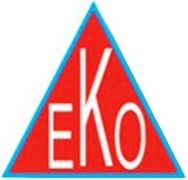

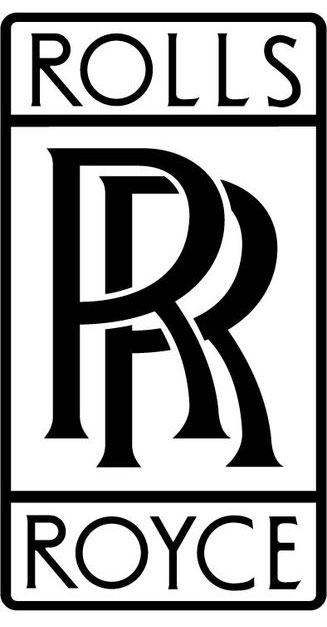

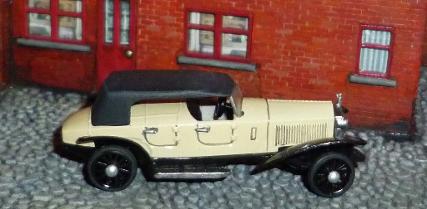
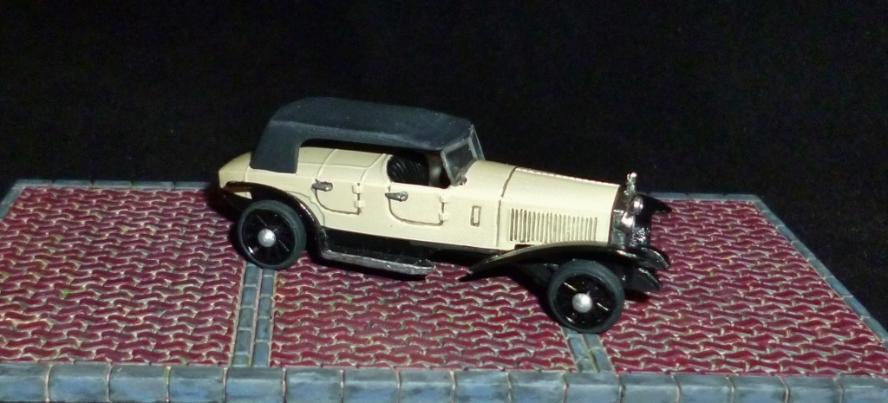


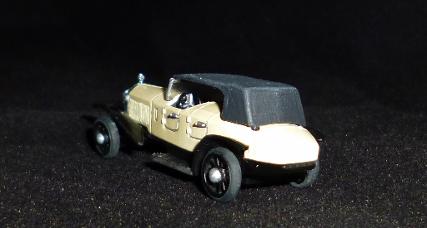

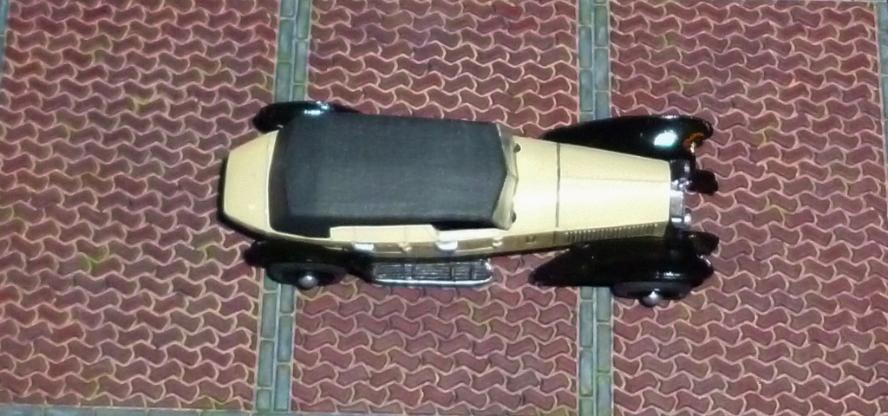

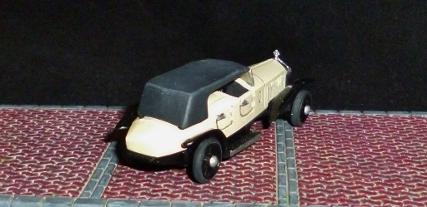

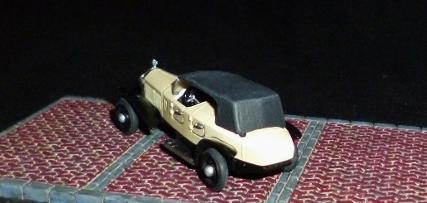
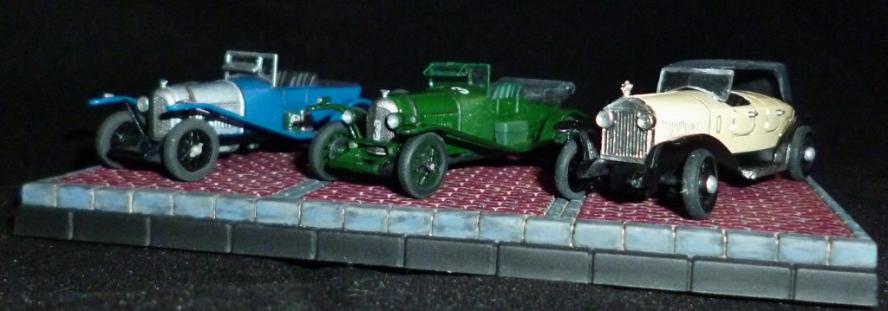
This kit was something Ian saw on ebay late one night in January 2023, and as we all know that is not a good time to be browsing an auction site! But when you see something so rare and so nicely detailed it has to be bought because you might never get the chance again; especially if the price is good. £10 for two beautifully detailed 1/86th scale models of a rare Rolls-Royce model, from a kit manufacturers range that is also very rare, and for it to be one of the duel colour sets rather than both bodies having the same body colour which is even rarer; well; bargain! Alt-Berlin means Old Berlin and while the original moulds for these cars is indeed old, they don’t come from Berlin. Our set, item # 111006, of two different coloured cars is very rare; usually they would be the same colour. All the Alt-Berlin car models are rare in Britain these days.
The Alt-Berlin range of vintage cars consisted of 12 kits :-
1905 Hispano Suiza 1916 Ford T 1925 Opel Laubfrosch 1936 Citroën 11B Ligero
1907 Le Zebre 1916 Studebaker Big-6 1928 Rolls Royce Phantom 1937 Bugatti T57 Stelvio
1907 Orix Taxi 1922 Citroën 5CV 1934 Fiat Balilla 1938 Lancia Aprilia
As we mentioned above the original models aren’t German, but Spanish, and the heritage is a little mixed. EKO is a brand name from the 1950s firm of Blasco Industries, Barcelona, Spain. In the 1970s there was a huge range of miniature vehicles, military and civilian, of all eras, in the EKO catalogues. Over 200 items in 1/87-86th scale consisting of cars, trucks, road & construction equipment vehicles. That’s before you factor in the 1/43rd scale diecast vehicle models and the aircraft releases.
But not all the moulds were EKO originals. EKO took over Anguplas in 1967 and reworked the moulds that they had acquired. Anguplas released their models as ready-made items but EKO saw the potential as quick kits for kids and after the moulds were re-engineered, with additional detail added and upgraded wheels (which explains the semi-artisan nature of some EKO kits), put them on sale.
Released in 1979 in blister packaging with a small instruction sheet and catalogue. EKO’s models were on the market for around two years. The moulds were then passed around and these models have also been released as ‘Aneste’ and ‘On The Road kits’ too.
EKO themselves went through tough times going bankrupt, and then the name revived, several times. As of 2011 the name returned as ToyEko and started making castings from the older moulds they still had.
Ian was quite excited by these kits and finished the first one, this cream open touring car, straight out the packet in late March 2023. It is airbrush painted with Zero Paints colours from Hiroboy over Alclad white primer. All the detail painting has been done by brush using acrylic paints from a variety of companies including Tamiya, Revell, Citadel and Deco-Art. Chrome detailing has been done with Revell acrylic brush paints and Alclad 2 metal airbrush paints.
RETURN TO:-
